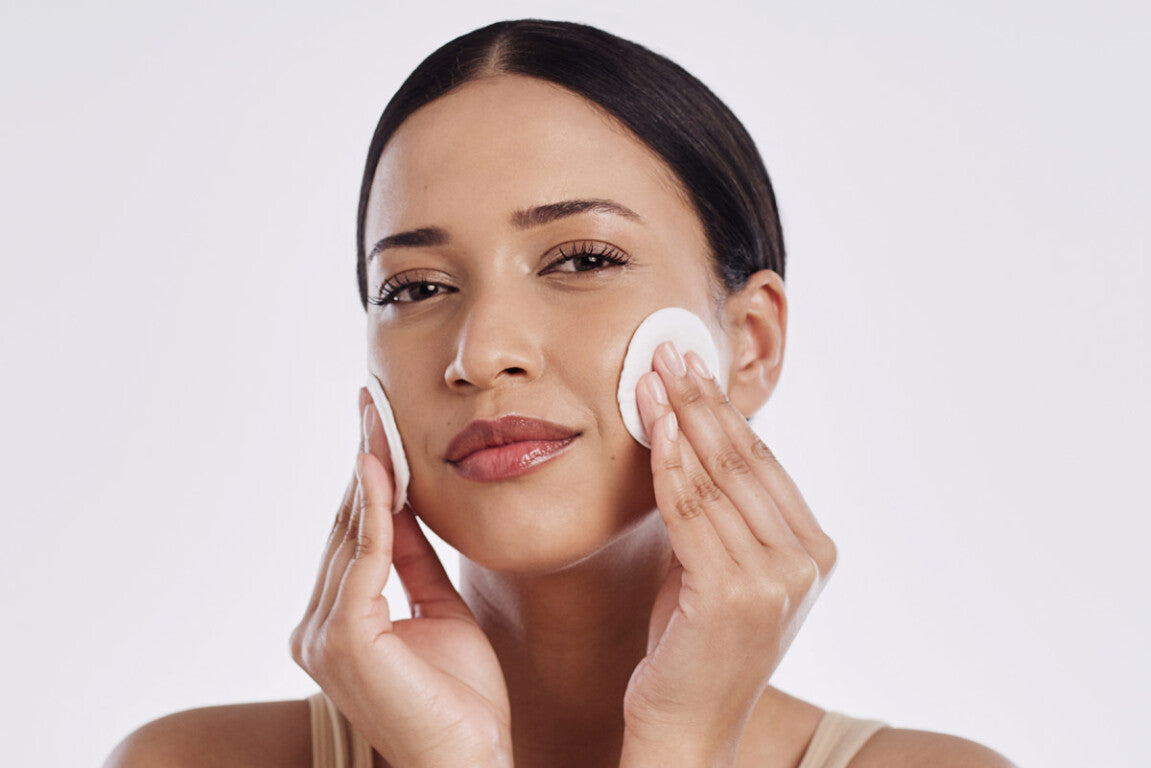Whether you’re a summer beach bum or you prefer the great indoors, odds are you’re exposed to the sun throughout the day. Unfortunately, even on days when you spend most of your time inside, the sunlight that reaches you through windows or when driving in your car can still negatively impact your skin. Even blue light (HEV rays) from your phone and computer screens can dry out your skin and contribute to aging.
Proper sun protection is vital for everyone, regardless of their skin tone or skin type. And…during the summer months, when we experience a higher UV index, our skin is even more at risk for sun damage and cancer-causing effects if left unprotected.
So, how can we begin to protect our skin from the sun? Well, for that, we can turn to Dr. Simran Sethi, an Internal Medicine doctor and Founder and Medical Director of RenewMD medical spas in California. On The Skin Report podcast, Dr. Sethi shares all about the different types of sunscreen, how they work, and which one(s) may be the best for you.
Chemical and Mineral – What’s the Difference?
Thanks to advancements in science-backed skincare, professionals like Dr. Sethi have developed successful methods to protect skin from sun damage. The most popular sun protection method is through SPF sunscreens, which can come in chemical or mineral forms.
Chemical sunscreens and mineral sunscreens differ in the ways that they provide protection.
Below are some important advantages and drawbacks to each type of sunscreen.
Chemical Sunscreens
Chemical sunscreens protect the skin from sun damage through chemical barriers. Their active ingredients are usually avobenzone, octinoxate, and oxybenzone, which must be absorbed into the skin to provide protection. These chemicals absorb UV rays that reach the skin and react to convert the rays to heat. This way, UV rays can be released from the skin as heat, rather than being absorbed by the skin and damaging it.
Pros
- This type of sunscreen is thinner and therefore easily applied to the skin.
- Chemical sunscreen is also easier to combine with other skin-nourishing ingredients. Marketers often do this to make their products even more appealing to consumers.
Cons
- For chemical sunscreens to work, they must first absorb into the skin. This can take around 20-30 minutes, meaning users have to wait this long after application for their sunscreen to become active.
- Chemical sunscreens have to get absorbed into the skin, so they are more likely to cause skin sensitivities and clogged pores. The active chemical ingredients in chemical sunscreen may cause those with sensitive skin and even children to experience breakouts, redness, and irritation.
- The ingredients in chemical sunscreens have been known to wash off swimmers’ skin and damage coral reefs, leading them to be banned in many places worldwide.
- Using other products on the skin may adversely affect the absorption of a chemical sunscreen. Variance in absorption due to the presence of other skin products may result in less overall skin protection.
Mineral (Physical) Sunscreens
Mineral sunscreen, often referred to as “physical” sunscreen, uses its active ingredients to create a physical barrier that blocks UV rays from reaching the skin. Unlike chemical sunscreen that is absorbed by the skin, mineral sunscreen sits on the skin’s surface and repels UV rays with ingredients like titanium dioxide and zinc oxide.
Pros
- Since mineral sunscreen does not need to be absorbed by the skin to be effective like chemical sunscreens, it begins protecting your skin the moment it is applied.
- Mineral sunscreens do not contain irritating chemicals, making them a safe and effective alternative to chemical sunscreens for individuals with skin sensitivities and conditions.
- Mineral sunscreen is safe to use when pregnant and on toddlers over six months old, unlike chemical sunscreens.
- Tinted mineral sunscreens are often more protective due to the extra tinted pigment.
- They can also spread and blend seamlessly onto your skin, regardless of skin tone.
Cons
- Using mineral sunscreen will likely require you to reapply it more frequently, as it can more easily wash off your skin’s surface with sweating, unlike chemical sunscreen that absorbs into the skin.
- Mineral barrier sunscreens tend to be thicker in texture than chemical sunscreen, making them more challenging to apply and more likely to create a white cast on the skin, especially in darker skin tones. This is because the active ingredients in mineral sunscreens cause their thick and pasty texture.
The Best Sunscreen Option
As you can see, each sunscreen option has its advantages and disadvantages. But when it comes to choosing a winner, Dr. Sethi prefers mineral and physical barrier sunscreens to chemical sunscreens every time.
Mineral sunscreens are safe for sensitive skin while offering excellent sun protection. Dr. Sethi recommends tinted mineral sunscreen in a non-comedogenic and safe formulation with an SPF of 30-40 as it provides the most protection. In addition, these types of tinted mineral sunscreen formulations can blend in beautifully with everyone’s skin tone.
You can find mineral sunscreens widely available at retailers like Target, drug stores, online, and even in Dr. Sethi’s own skincare line. If you are looking for a new sunscreen, consider Sun Protect, a tinted, SPF 40 mineral sunscreen that provides UVA, UVB, and Blue Light protection to keep your skin safe all year long.
For more information about proper sun protection and episodes on other science-backed care methods to improve the health of your skin, tune into The Skin Report podcast.



